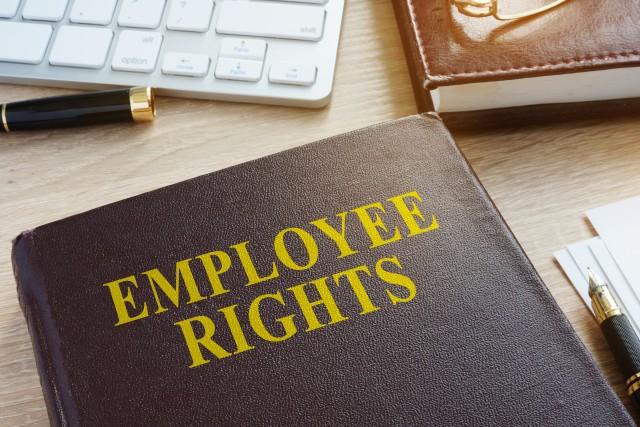
Employee Dismissal: A Comprehensive Overview for Employers
Navigating the complex world of employee dismissal can be a daunting task for employers, business owners, and managers. Understanding the intricacies of dismissal procedures is not only crucial to maintaining a healthy work environment but also essential to protect your business from potential legal pitfalls. That’s why we’ve crafted this comprehensive guide, written in a friendly and trustworthy tone, to help you confidently steer through the dismissal process.
In this blog post, we will explore the various types of dismissal, the importance of following fair procedures, and the step-by-step guidance to ensure you stay on the right side of the law. We will also discuss potential risks and consequences associated with dismissals, such as constructive, unfair, and wrongful dismissals, and offer tips for managing performance issues proactively.
As you read through this guide, remember that every situation is unique, and seeking professional advice when in doubt is always a wise choice. So, let’s dive in and get you equipped with the knowledge you need to handle employee dismissals with confidence and professionalism.
Understanding Employee Dismissal:
This refers to the termination of an employment contract by the employer. There are various types of dismissal, including fair, unfair, constructive, and wrongful dismissal. Fair dismissal occurs when an employer has a valid reason and follows a proper process for terminating an employee. In contrast, unfair dismissal happens when an employer terminates an employee without a justifiable reason or fails to follow the correct procedure. Constructive dismissal occurs when an employee resigns due to the employer’s breach of contract or intolerable working conditions. Wrongful dismissal is when an employer terminates an employee in breach of their employment contract. The legal framework for dismissals in the UK is mainly governed by the Employment Rights Act 1996.
Key Principles for Fair Dismissal:
There are five potentially fair reasons for dismissal: misconduct, capability, redundancy, illegality, and some other substantial reason. To ensure a dismissal is fair, employers must follow a fair process and comply with the ACAS Code of Practice. The concept of ‘reasonableness’ is crucial in dismissal decisions, which means employers should act reasonably in all circumstances, considering the employee’s situation and the employer’s obligations.
The Dismissal Process: Step-by-Step Guidance
A proper dismissal process involves several key steps. First, conduct a thorough investigation and gather relevant evidence. Second, inform the employee of the issue and arrange a disciplinary hearing. Third, conduct the disciplinary hearing, ensuring the employee has a chance to present their case. Fourth, make a well-informed decision and provide the employee with written notice of the outcome. Fifth, offer the employee the right to appeal the decision. Throughout the dismissal process maintaining clear documentation and record-keeping is crucial to demonstrate fairness and compliance with relevant regulations.
Constructive Dismissal:
Constructive dismissal occurs when an employee resigns due to their employer’s breach of contract or unbearable working conditions. This type of dismissal can be risky for employers, as employees may claim compensation for constructive dismissal. To avoid such situations, employers should foster a positive work environment, address grievances promptly and maintain open communication with employees.
Unfair and Wrongful Employee Dismissal:
Unfair dismissal refers to the termination of an employee without a valid reason or a failure to follow proper procedures. Wrongful dismissal, on the other hand, involves the breach of an employee’s contract during termination. While both types of dismissal can result in compensation claims from employees, the main difference is that unfair dismissal focuses on the reason and process, whereas wrongful dismissal centres on the contractual aspect. Employers should be mindful of these distinctions and follow proper procedures to minimize the risk of such claims.
Protected Characteristics and Discrimination:
Protected characteristics under the Equality Act 2010 include age, disability, gender reassignment, marriage and civil partnership, pregnancy and maternity, race, religion or belief, sex, and sexual orientation. Discrimination during the dismissal process can result in legal claims against the employer. To avoid discriminatory practices, employers should base dismissal decisions on objective criteria, provide equal opportunities for all employees, and remain aware of unconscious biases.
Redundancy and Employee Dismissal:
Redundancy is a specific type of dismissal where an employee’s job is no longer needed or the employer needs to reduce the workforce.
To ensure a fair redundancy process, employers must follow proper procedures, including selecting employees fairly based on objective criteria, consulting with employees about the proposed redundancy, and considering alternatives to redundancy, such as redeployment or reduced working hours. Employers should also provide reasonable notice and any redundancy payments due to affected employees.
Settlement Agreements:
Settlement agreements are legally binding contracts between employers and employees that may be used to resolve disputes, including dismissal disputes, without going to an employment tribunal. These agreements can offer benefits, such as avoiding potential legal claims and saving time and resources. However, employers should carefully negotiate and draft settlement agreements to ensure that both parties interests are protected. Seeking legal advice when drafting settlement agreements is highly recommended.
Managing Performance Issues:
Proactively managing employee performance can prevent dismissals due to poor performance. Employers should conduct regular performance reviews, set clear expectations and maintain open communication with employees. If performance issues arise, creating a performance improvement plan with specific objectives, timeframes, and support measures can help get the employee back on track and prevent the need for dismissal.
Training and Support for Managers:
Ensuring that managers have the necessary training and support to handle dismissals effectively is essential. Employers should provide managers with access to training resources, such as workshops, webinars, and online courses, focusing on employment law and dismissal procedures. Encouraging managers to seek legal advice when needed can also help prevent costly mistakes and ensure compliance with employment law.
Conclusion
As we come to the end of this comprehensive guide, we hope that you now feel more confident and well-equipped to navigate the often-challenging waters of employee dismissals. By understanding the different types of dismissal, adhering to fair procedures, and proactively managing performance issues, you can create a positive work environment while protecting your business from potential legal challenges.
Remember, the key to successfully handling employee dismissals lies in fostering open communication, adhering to proper processes, and being mindful of the legal implications of your decisions. However, each situation is unique and seeking professional advice when in doubt remains a wise course of action.
We encourage you to revisit this guide as needed and share it with your colleagues, helping to create a community of well-informed employers, business owners, and managers. If you have any further questions or concerns about dismissal processes and procedures, please don’t hesitate to reach out for professional guidance. With the right knowledge and support, you can ensure the success and stability of your business while fostering a thriving, harmonious workplace for your employees.
Call John Bloor at EBS Law on 01625 87 4400 if you are an employer and need free Employment Law Advice.


